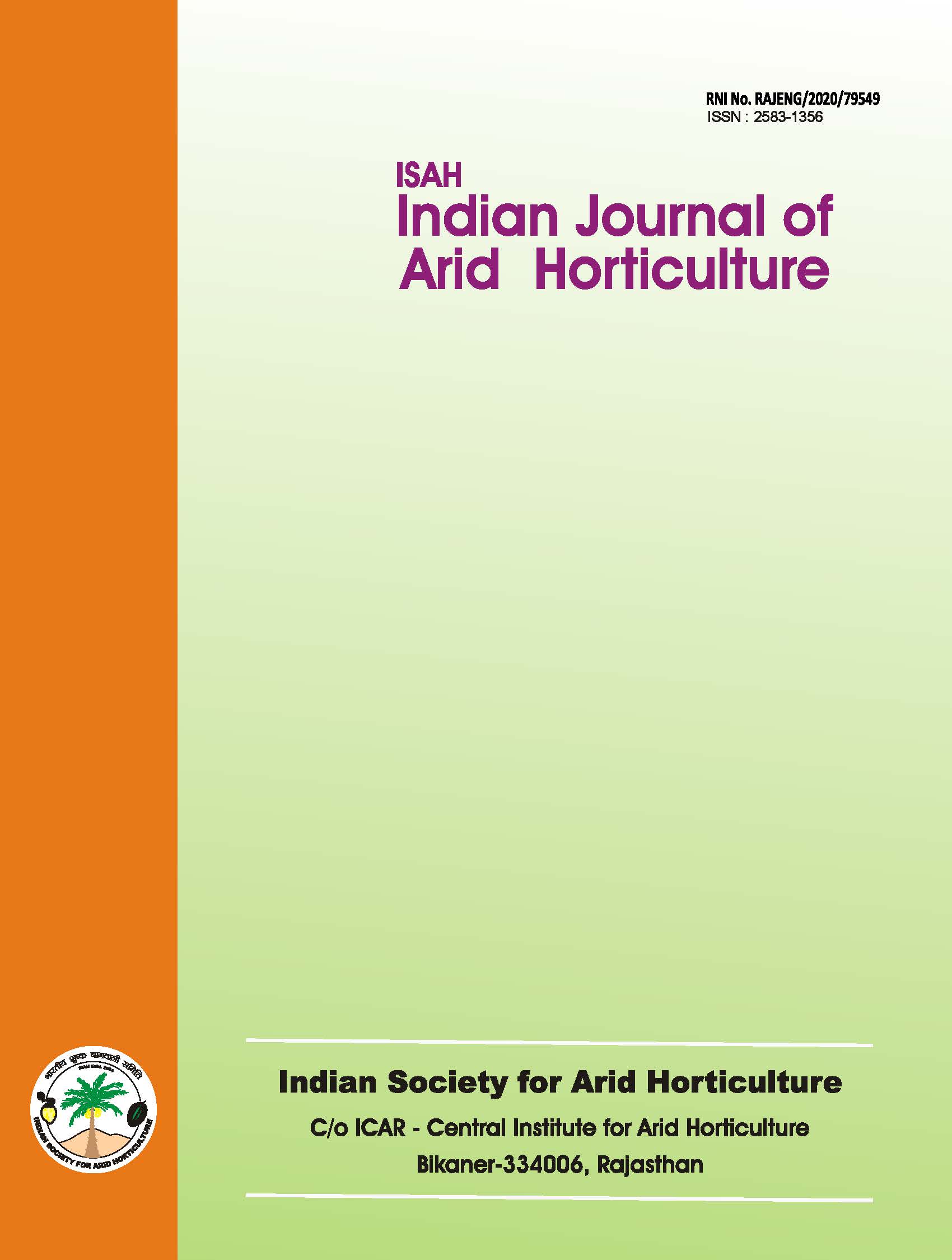In vitro micropropagation of guava (Psidium guajava L.) through nodal explant using different phytohormone combination
Keywords:
Guava, nodal explants, sterilization, micropropagationAbstract
Guava is a popular fruit of subtropical area. Guava is one of the recalcitrant plant species for tissue culture. In vitro plant exudation and inborn contamination are two major bottle necks during in vitro culture of guava. Therefore the present study was undertaken to optimize the concentration of phytohormones for micropropagation of guava. Nodal explants were taken for the study and were excised from guava plants maintained in the germplasm block of the institute. Nodal buds (2.5cm length) were excised and brought in the lab in 50mg/1 Ascorbic acid. For surface sterilization Bavestin (200mg/1) was used followed by 0.1% HgCl, for 5 minutes. Explants were inoculated vertically on MS medium supplemented with 50 mg/l PVP and BAP alone or in combination with Kinetin. The cultures were incubated at 25°C in the dark for two days then allowed to grow under a photoperiod of 16/8 hours light and dark period. Among the different combinations of BAP and Kinetin used, MS medium supplemented with 2 ppm BAP, 1 ppm Kinetin and 50 ppm PVP found best for shoot proliferation. MS medium supplemented with 1 ppm IAA found best for rhizogenesis.Downloads
References
Amin, M. N. 1986. Micropropagation of a tropical fruit tree Psidium guajava L. Journal of Indian Botany Society, 65: 43-44.
Amin, M. N. and Jaiswal, V. S. 1986. Micropropagation as an aid to rapid cloning of guava cultivars. Scientia Horticulturae, 36: 89-95.
Chan, H. T., Brekke, J. E., and Chan, T. 1971. Nonvolatile organic acids in guava. Journal of Food Science, 36: 237-239.
Jaiswal, V. S. and Amin, M. N. 1986. In vitro shoot proliferation and plant formation from somatic tissue of guava. Paper presented to the VI International Congress on Plant Tissue Culture, University of Minnesota, Minneapolis. p. 279.
Loh, C. S. and Rao, A. N. 1989. Clonal propagation of guava from seedlings and grafted plants and adventitious shoot formation in vitro. Scientia Horticulturae, 39: 31-39.
Murashige, T. and Skoog, F. A. 1962. Revised medium for rapid growth and bioassay with tobacco tissue culture. Physiologia Plantarum, 15: 473-497.
Papadatou, P. and Pontikis, C.A. 1990. Ephtimiadox E and Uydaki M. Rapid multiplication of guava seedlings by in vitro shoot tip culture. Scientia Horticulturae, 45: 99-103.
Prakash, H. and Tiwari, J. P. 1996. In vitro clonal propagation of Guava (Psidium guajava L.) cv. Sardar. Abstract in National Symposium on Horticultural Biotechnology, Bangalore, India, p. 28-30.
Rathore, D. S. 1976. Effect of season on the growth and chemical composition of guava (Psidium guajava L.) fruits. Journal of Horticultural Science, 51: 41-47.
Singh, G., Rajan, S., and Singh, A. K. 2003. Approaches and strategies for precision farming in guava. In Precision Farming in Guava, edited by H. P. Singh, G. Singh, J. Samuel, and R. K. Pathak, p. 92. NCPAH, DAC/PFDC, CISH, Lucknow, India.

